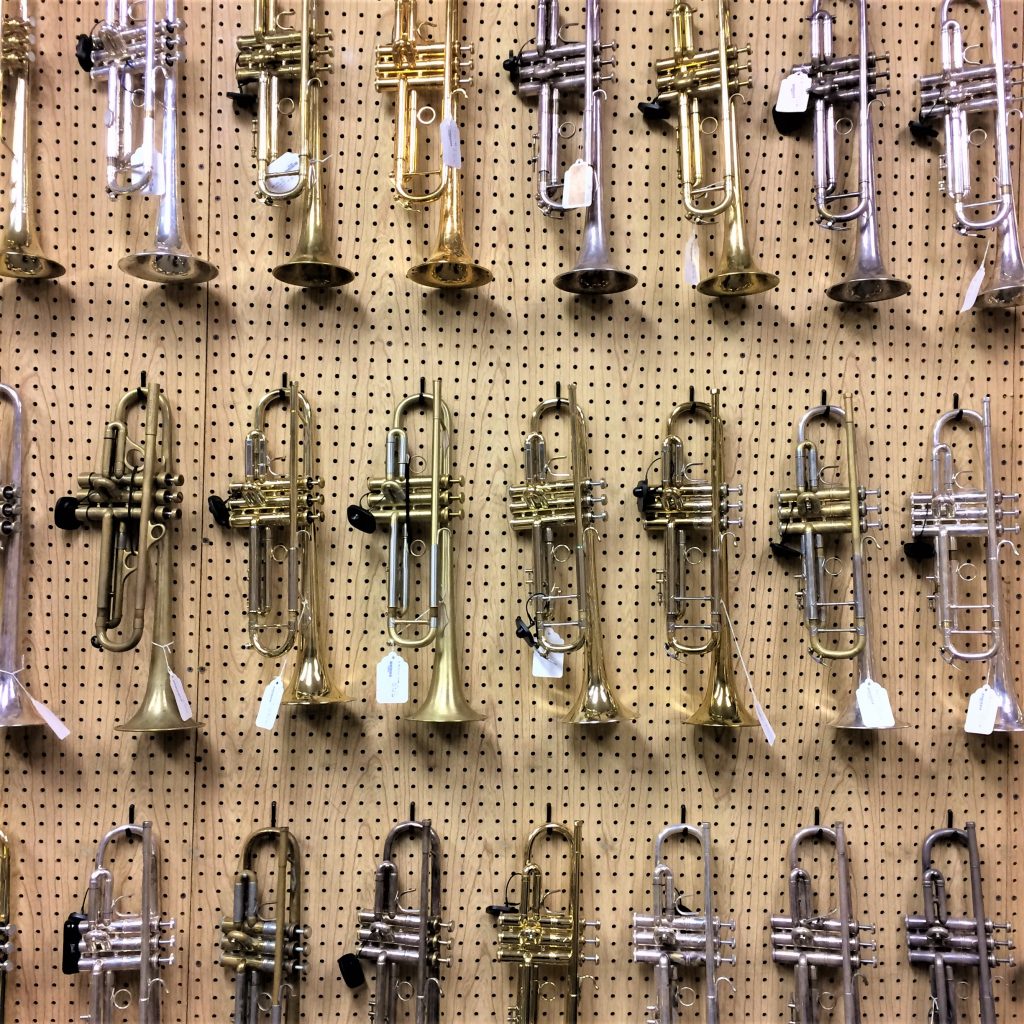The most consistent issue I’ve come across in young trumpeters is insufficient use of air. It takes many students years to understand how much air is necessary to play the instrument well and then how to appropriately utilize it. It’s easy to tell students they need more air, but “more” is a subjective idea. In contrast to open ended statements like “more,” providing descriptive ways to visualize and assess air usage can give students tools that are both more specific and more effective. A few such ideas can help students engage their air correctly without having to overthink the mechanics of it. Below are four concepts which I have consistently found useful in both my teaching and playing.
Listen to the sound of the breath. Simply listening to the sound of the breath will indicate whether it’s effective or not. I like to listen for an “OH” sound. An “OH” sound means the throat is relaxed and the lungs are taking in a sufficient amount of air. From there I think of “TU” for the exhale. I prefer “TU” over “TAH” or “TOE” because the “U” sound better represents how air should be moving through the instrument. Put together, the inhale and exhale can be thought of together as “OH-TU.”
Visualize the air moving forward. I like to think of my air as always moving forward in a continuous, straight line, like a string that extends outward infinitely. Visualizing the air moving in such a way engages the physical mechanics properly, creating an energetic and steady airflow. Try it: Exhale while visualizing blowing your air to the screen you’re reading this from. Now exhale while visualizing your air moving along that continuous, straight line. You should be able to feel a noticeable physical difference. When blowing along the continuous line forward, the core engages and the air moves with increased energy and consistency. When the air is applied like this, it can help with consistency in tone and pitch. The stronger airflow can affect range and endurance positively, as well.
Think out, not up. High notes. The upper register. Playing above the staff. All of these terms depict range moving vertically. This vertical depiction, however, doesn’t do brass players any good. When I exhale while visualizing my pitch moving higher, I feel added tension in my chest and neck and my air doesn’t gain any power. Visualizing up essentially results in me trying to squeeze the pitch up. Relating the upper register to the previous idea of air moving in a continuous line, one can think of higher notes as being further away, or further out. If I shift my visualization from thinking of high notes as further up to further out, the result is completely different. Visualizing high notes as further out engages the core and creates more power in the air, resulting in stronger tone and better range in the upper register. It’s a subtle change in thinking, but I have found it to be quite helpful when playing “up high.”
Blow through the end of the phrase. There are many times I’ve heard a student’s sound cut out as they’re playing a phrase that descends into the lower register. The Chicowitz Flow Studies or descending slurs (i.e. C-G-low C) are examples of settings where this might happen. In descending passages it’s easy to think, “Oh, I’m going lower, so I don’t have to use as much air.” Easing up on airflow, though, is often the cause of the tone breaking up. When this happens, I ask students to think about blowing all the way through the last note. Thinking of the air moving steadily through the phrase and all the way through the final pitch ensures that the airflow remains consistent. With consistency in the airflow, there is better connection between notes and far fewer instances of the tone cutting out.
